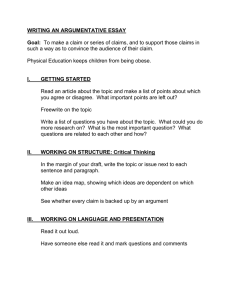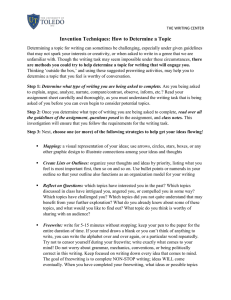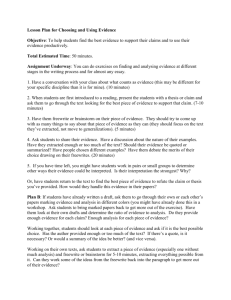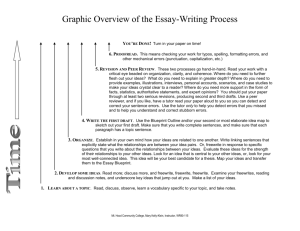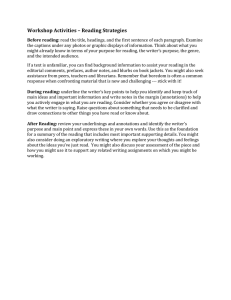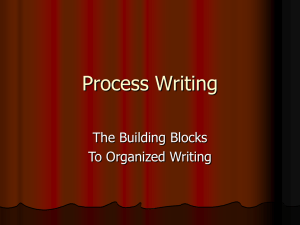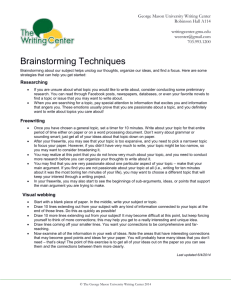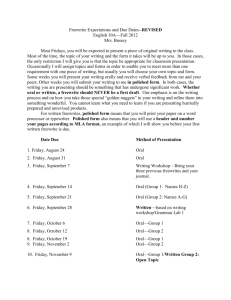Incremental Writing.doc
advertisement
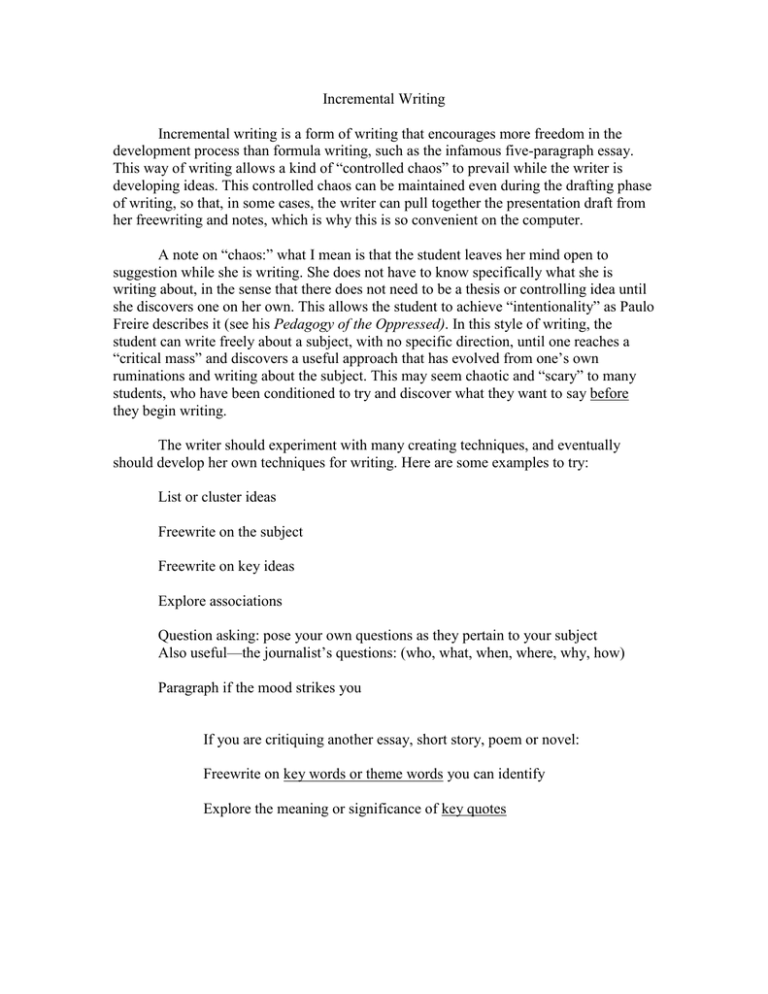
Incremental Writing Incremental writing is a form of writing that encourages more freedom in the development process than formula writing, such as the infamous five-paragraph essay. This way of writing allows a kind of “controlled chaos” to prevail while the writer is developing ideas. This controlled chaos can be maintained even during the drafting phase of writing, so that, in some cases, the writer can pull together the presentation draft from her freewriting and notes, which is why this is so convenient on the computer. A note on “chaos:” what I mean is that the student leaves her mind open to suggestion while she is writing. She does not have to know specifically what she is writing about, in the sense that there does not need to be a thesis or controlling idea until she discovers one on her own. This allows the student to achieve “intentionality” as Paulo Freire describes it (see his Pedagogy of the Oppressed). In this style of writing, the student can write freely about a subject, with no specific direction, until one reaches a “critical mass” and discovers a useful approach that has evolved from one’s own ruminations and writing about the subject. This may seem chaotic and “scary” to many students, who have been conditioned to try and discover what they want to say before they begin writing. The writer should experiment with many creating techniques, and eventually should develop her own techniques for writing. Here are some examples to try: List or cluster ideas Freewrite on the subject Freewrite on key ideas Explore associations Question asking: pose your own questions as they pertain to your subject Also useful—the journalist’s questions: (who, what, when, where, why, how) Paragraph if the mood strikes you If you are critiquing another essay, short story, poem or novel: Freewrite on key words or theme words you can identify Explore the meaning or significance of key quotes Sample incremental writing exercise 1. Write your topic at the top of your page. 2. List everything you can think about associated with your topic or do a clustering exercise if you prefer. 3. Take one idea from your list or clustering exercise and freewrite about it—try to generate at least a page of writing. 4. Look back over your freewriting and see if you can identify any key ideas or key words. 5. Freewrite on a key idea or key word, or choose something else from your list (see #2) and freewrite on it. Organizing your ideas in a logical fashion 1. After you have generated a lot of writing, see if you can identify the main ideas or topics you were writing on and arrange them in a loose outline. 2. If you have not discovered one yet, see if you can develop a thesis that will hold all of your ideas together. 2. Hopefully, a picture of your essay will begin to emerge, and you can begin to pull together your paragraphs and develop and organize them in a logical way.
